Grenada’s Only Travel Guide You Need For A Great Trip in 11 Easy Steps
- Destinations Americas
Cruisit Team
- October 1, 2022
- 0
- 4909
- 74 minutes read

As far as archaeological records show, Grenada was first inhabited by people called the Ciboney, believed to have settled around 1000 to 500 BC before the arrival of the Arawak people. The Arawak moved to the island of Grenada around 200 AD from the Amazon Basin of South America and were peaceful people. Archaeological sites have unearthed evidence showing that these settlers were skilled farmers and fishermen who’ve built boats. They’ve also left behind other archaeological treasures are the petroglyphs at Duquesne Bay in the Parish of St. Mark, where carvings on large boulders depict faces and drawings from the past. By 1000 AD, a more aggressive clan arrived from Sotuh America called the Caribs. In their wake, they’ve destroyed Arawak settlements and drove them out. Hundreds of years later, Grenada was sighted by Christopher Columbus in 1498 without landing and have it the name Concepciôn. Although by then, the name Grenada was not yet used. More than a century passed with more aggression from the Carib people towards the inhabitants of Grenada. During this time, British merchants attempted to form a settlement in 1609, although they were faced by the Caribs and forced to leave.
In 1649, a French expedition of more than 200 men from Martinique, led by Jacques Dyel du Parquet, founded a permanent settlement on Grenada, right after a fortified settlement was constructed by the Company of the Isles of America, it was bought by Parquet, then sold to Jean de Faudoas, and later bought by King Louis XIV in 1664 and shortly after became a French colony. In 1675, a Dutch privateers captured Grenada, but a French man-of-war arrived unexpectedly and recaptured the island. It remained under French rule until 1762 during the Seven Years War when the French ceded Grenada to the British, with the treaty of Paris. It is also believed to have acquired the name Grenada then. Around two decades later, it was recaptured by the French, making use of the American War of Independence, however, was restored to the British in 1783. The British imported a large numbers of slaves from Africa to work the sugar plantations, and develop the territory. However, the end of slavery was near, and by 1796, with the abolition of slavery favored by French policy, a rebllion broke out that killed a number of British, but the uprising was quelled. The abolition of slavery officially took place in 1834 and all the slaves were freed by 1838. Two decades later, Indian immigrants arrived and a period of development took place. The British rule continued until 1974, when Grenada became fully independent following two decades of reforms and constitutional changes. But, like many countries around the world, independence did not mean peace. Two coups followed the independence, and a short invasion by the Americans in 1983 when Grenada was seized by Marxist colonists. The following decades, into the 21st century saw multiple reforms, democracy restored, and a creation of more stable country.
Today Grenada keeps enjoying its several decades of peace and stable government with multiple efforts in infrastructure improvements, among many other developments. The island nation is famous for its spices, which include nutmeg, cloves, ginger, cinnamon, and cacao which gave it the moniker of the “Spice Isle”. Grenada is also the smallest independent country in the western hemisphere in the Caribbean sea, to the northeast of Trinidad and Tobago, and southwest of Saint Vincent and the Grenadines. This gorgeous tropical paradise, filled with lush tropical landscape and crystal clear waters is a perfect start to your Caribbean adventure.
It is made up of three big islands and several small ones. The large island is called Grenada, where you will find most of the population, six parishes, most of the cities, and the capital city of St George’s, and the tourist area of, Grand Anse. Carriacou is the second-largest island in Grenada, although being much smaller than Grenada itself. Hillsborough is a small town located on the island’s 13 square miles. Third biggest is the island of Petit Martinique, a volcanic island, and populated by less than a thousand people and offers few visitor amenities.
Grenada is a great option in the Caribbean if you want to spend a week or two on a relaxing tropical island that has not yet become a crowded, world tourist destination, although it should be. One of its primary selling points is the abundance of beautiful, soft-sand beaches. St. George’s, one of the most beautiful capitals in the area, sits on a series of rolling hills, while the interior is rugged and lush. Almost the size of Budapest, the island provides two days of leisurely exploration, with opportunities to see waterfalls, the rainforest (with great hikes), and chocolate, nutmeg, and other industries. Snorkeling and diving are also quite well-liked, and for good reason.
“Aromatic, authentic, and a glistening. Grenada’s surreal charm and carefree vibe, its picture-perfect beach surrounded by silky beaches, and the kindness of the Grenadian people will leave you wanting to return.”
Enjoy your first holiday in Grenada or another visit and the welcoming Grenadines from the comfort of a boat, a five start hotel, or a simple lodge, Grenada has all those possibilities sorted. Hotels are conveniently located in the southwest part of the main island, which is only a short distance from the Grenada airport. No skyscrapers have been built there, and only the Grand Anse region can be considered a resort. However, there is a wide variety of charming hotels to choose from, as well as delicious dining options and exciting nightlife (thanks to the presence of St. George’s University students and yachties).
While in Grenada, you’ll notice a distinct nutmeg aroma in the air. However, this island is also known as a Fruit Island due to the abundance of wonderful fruits that can be seen growing wild across the verdant countryside. However, it is also known as a Beach Island, home to countless stunning stretches of beach. Grenada’s allure comes from the spices that flourish in the island’s lush volcanic soil, the iodine that wafts in from the waves lapping at the shore, and the delicious aromas wafting from the hills. Tourists seeking a less commercialized Caribbean experience flocked there thanks to the island’s rich culture.
As for wildlife enthusiasts, more than 200 species of animals are present on the islands, some which are endemic to Grenada, and others have been introduced, including African mongoose and monkeys. Keep watch as you hike the forests and you will be rewarded with sightings of incredibly beautiful animals amid the lush forests.
It has all the typical Caribbean beauty one could want for, from verdant highlands and rainforests to quaint coastal communities and lovely beaches lined with tropical trees. Grenada’s timeless beauty is evident everywhere you turn, making it a popular destination for all types of tourists, from those on a low budget to those searching for a five-star resort overlooking a picture-perfect beach and forest. Visitors to Grenada can count on one thing: to unwind, eat their fill of the island’s food, and enjoy a cold drink while lounging on the island’s ideal beach.
The climate of Grenada is greatly influenced by the trade winds, which bring colder air to the island. Temperatures in the 20s and 30s Celsius are common. The months of January and April tend to be the coldest and driest of the year. The rainy season begins in June and continues till the year’s conclusion. During the rainy season, you may expect a few wet days per week. Thankfully, the sun returns in less than an hour to meet the waves and sands.
Staying on the move will allow you to take advantage of all that Grenada has to offer visitors. This Cruisit Grenada travel guide provides an itinerary that strikes a balance between leisure and exploration. Arrive in this untapped tropical paradise near the Caribbean side of South America, with a colonial vibe, and enjoy it to the fullest. The following itinerary for Grenada is tailored to the country’s peak tourist season but can be enjoyed during the shoulder months. With days spent in ancient parts of town in the company of legend, or surrounded by lush peaks and dramatic picture-perfect scenery, and tens of species to spot to explore on your hikes, Grenada will fulfill your wildest dreams.
Moreover, we will provide you with all the information you need to go across Grenada with ease by providing you with a comprehensive travel guide. As you read on, you’ll learn about the best of what Grenada has to offer—its towns, sights, transit options, and more. If you’re pumped up enough, then let’s get started!
- Visit the coastal hamlet of Gouyave on a Friday where the town comes to life with music, delectable food, and nightlife that are open all evening.
- Cool off in the crystal clear waters of Grand Anse Beach.
- Taste authentic Jerk Chicken with a Caribbean view
- Take a trip to the Concord Waterfall
- Try some chocolate at the Chocolate Museum and Belmont Estate
- Discover the stunning architecture of St. George’s Caribbean-facing district.
- Take a dip at Annandale Falls if you haven’t had enough
- Try some local fruits like Soursup
- Visit the world’s oldest distillery, the Antoine Rum Distillery
- Climb up the Seven Sisters Waterfall
- Try some nutmeg, from a farm in Grenada where the famous spice is produced
- Scuba dive at Purple Rain, Flamingo Bay, Bianca C, and Hema Wreck, which are all great dive spots
- If you’re sailing, sail from St Lucia to Grenada
- Ride the discovery train and go around the beautiful St George’s
- Spot whales in the waters surrounding the island
- Maurice Bishop International Airport serves as the primary gateway to Grenada by air.
- From October through May, cruise ships and yachts bring in about half of Grenada’s annual visitors.
- Get to Carriacou and Petite Martinique swiftly by taking a ferry or a plane.
- In Grenada, public buses serve as the primary mode of mass transit. Minivans with seating for 15 to 20 passengers that operate on set routes.
- The islands’ official language is British English, which is also widely spoken among the local population.
- One of the best things to buy in Grenada is spice. Most shops would gladly help you get your food past customs by sealing it for you.
- If you’re on a tighter budget, taking ferries and public transit is your best bet.
- Digicel is the SIM provider, but Flow is also available, so make sure your phone is unlocked before you go.
- Search all available sites to discover the ideal Airbnb or hotel for your budget, which might range from $25 to $750 or more.
- While renting a car on the island of Grenada may provide you with the independence you want, it may quickly become an expensive endeavor. Avoid potential problems by getting full coverage insurance.
- Grenada has a wide variety of attractions to please visitors of all interests. From campers and intrepid hikers to the tranquility of secluded beaches and waterfalls.
Crime & Scams in Grenada
If you’re wondering whether or not it’s safe to visit Grenada, the answer is yes, Grenada is safe. Grenada is a beautiful island with a far lower crime rate than big American cities like New York and Los Angeles. Pickpocketing and purse snatching are examples of the common types of crime that takes place. A rise in incidents is common prior to and during large yearly celebrations like Carnival in August. The number of boats stolen from while tied or parked off Grenada’s southern coast has increased. Pickpockets steal valuables, money, and navigational tools like outboard motors. While physical assaults on women are relatively rare, verbal harassment and abuse come in a wide variety of forms and are much more widespread. Most routes beyond that point are congested and twisty. The bends of mountain roads are frequently unmarked. Problems like potholes, speed bumps, and dim streetlights are dangerous. When temperatures rise to dangerous levels or hurricane season rolls around, road surfaces frequently degrade.
Violence against tourists is uncommon in Grenada, thus single women visitors should feel comfortable exploring the nation.
Be especially cautious if you are in public places frequented by foreigners, near official buildings, popular tourist sites, or on public transit. Avoid going to slum regions of the city. Take extra precautions on city streets, especially after dark or if you are alone. Carry no significant sums of money or wear expensive watches or jewelry. Avoid using your phone while walking down the street.
Healthcare in Grenada While Traveling
Whether it’s the public hospitals provided by the government or the private hospitals, the people of Grenada have access to one of the best healthcare systems in the Caribbean, complete with high-quality facilities and knowledgeable specialists that can treat a broad range of bothersome conditions. Note that if you need to be admitted to a hospital, public or private, you can expect to pay additional fees as a visitor.
Before every trip, make sure you are up to date on all routine vaccinations. Among the key recommended vaccines globally are yellow fever, chickenpox (Varicella), diphtheria-tetanus-pertussis (DTP), influenza (flu), measles-mumps-rubella (MMR), polio, hepatitis, typhoid, and shingles. If you will be in contact with wildlife, you may want to consider getting a rabies vaccination.
When visiting Grenada, you are legally required to purchase travel medical insurance. So, it is always important to have comprehensive medical coverage when traveling because you never know what you could encounter while overseas, especially if in the event of an emergency, a medical evacuation is a must for your safety.
Only eat foods that are cooked and served hot, avoid food that has been sitting on a buffet, and eat raw fruits and vegetables only if you have washed them in clean water or peeled them.
Only drink beverages from factory-sealed containers, avoid ice because it may have been made from unclean water, and only drink pasteurized milk.
Wash hands often with soap and water for 20 seconds, especially after using the bathroom and before eating. If soap and water aren’t available, use an alcohol-based hand sanitizer that contains at least 60% alcohol. Also, keep your hands away from your face and mouth.
Humid and tropical, Grenada has two main seasons—a dry one from January to May and a wet one from June to December—with two shorter interludes. Whether considering when to visit Grenada, it’s important to take both the weather and the price into account. Weather is usually at its finest during the busy season, but so are costs and the number of visitors. Bad weather, fewer visitors, and the potential for being caught in a hurricane are all hallmarks of the off-season. It’s possible to save money and have more pleasant weather by visiting Grenada during the end of winter or the beginning of summer, which are considered the shoulder seasons. Carriacou and Petit Martinique, on the other hand, have lower average rainfall and are more prone to severe drought during the dry season.
Shoulder Season
Shoulder season (the time between the high and low seasons) is a wonderful time to visit Grenada. There are two shoulder season and they are from mid-April to May and mid-November to mid-December. You’ll find fewer tourists and milder weather in these months, which fall either at the conclusion of the wet season or at the beginning of the dry season. Conditions are usually virtually as favorable as the dry season and far superior than those in the wet season. During the shoulder season in Grenada, humidity is still as oppressive as the peak season, however, not as miserable as the low season. In terms of the busyness, the island is more quiet than the high season, and some may still be closed before they open in December. Shoulder season hotel costs begin to decrease, but are still much higher than off-season rates. In certain cases, hotels even give away free nights or reduce their costs throughout the month of November. There is no doubt that May is one of the greatest months to travel, weather-wise and and considering affordability. This time of year in Grenada fits budget and mid-range travelers. Booking ahead of time won’t be necessary, but you may get a better deal if you do so.
High (Peak) Season
The dry season, which spans the months between mid-December and mid-April and corresponds with the northern hemisphere winter, is Grenada’s peak tourist season. If you want to enjoy the beach and other outdoor activities without feeling extremely uncomfortable, now is the greatest time of year to do it, since the temperature and humidity are at their most pleasant. Even though the high season in Grenada is significantly more pleasant than the rest of the year, the heavy humidity is still the most negative aspect of the climate. Along with being the driest time of year, March has the lowest chance of rain of any month. During the peak tourist season, Grenada has highs of 29 °C. and lows of 24 °C. Throughout these months, especially around the beginning of the season, due to school holiday, the island sees a surge of visitors, many of whom travel all the way from North America to soak up the sun. As a result, you may need to reserve your hotel in advance to avoid paying premium rates and finding a place to stay.
Off-Season (Low Season)
The months of June through the middle of November, which correspond to the wet season, are considered off-season on the island of Grenada. There is a greater probability of hurricanes during this time of year, and it is also the wettest. September and October are the worst of the worst since that’s when hurricane season is in full swing. As with the rest of the year, low tourist season temperatures range from a high of 30°C to a low of 25°C. It is also when the humidity levels are at their highest and the weather may get completely intolerable. During this period, hardly no people visit Grenada, so you may enjoy the island at your own pace. However, this is also when you can get the best hotel bargains which can suit both backpackers and budget travelers. Because there are fewer visitors to the islands in the winter, hotel prices in Grenada are at their lowest then. The longer you stay at a hotel, the more likely you are to receive a discount or a free night. Local life is at its busiest in the first half of August, during the island’s wild carnival celebrations.
By Plane
Due to the scarcity of other transportation options, flying to Greenland is the most time- and cost-efficient option. The two main airlines that offer regular service to Greenland right now are both Alaska Airlines and Canadian North. Both Air Greenland and Air Iceland provide flights to Greenland from the Danish capital of Copenhagen and the Icelandic capital of Reykjavk. As of right now, there are no direct flights from North America, the United Kingdom, or anywhere else in the world. However, one-stop transits through Denmark or Iceland are accessible. West Greenland’s Kangerlussuaq serves as the country’s primary airport, connecting countless internal routes.
By Boat
Many cruise companies make stops in the lovely port of St. George. More than half of all visitors come to the island on cruises, and the months of October through May see the greatest concentration of cruise ship passengers. They arrive at a station close to the capital city, where there are many of places to buy and get tourist information. The Windward Islands are often cruised by private boats, with Grenada serving as the northern turnaround point. The island of Grenada is a popular destination for cruisers and boasts excellent sailing facilities. The Office requests that all skippers report for registration and dockage fees. The regular business day begins at 0800 and ends at 1700. Inquire with security if it’s after hours. Captains are responsible for ensuring their passengers comply with all Customs and Immigration regulations. For boats departing the docks, a 24-hour notice must be given to the office.
By Train
In roughly 45 minutes, you may ride the Discovery Train, Grenada’s specialized tourist train, all the way around St. George’s. The museum and Fort George are only two of the many stops along the journey.
By Car
Renting a car in Grenada necessitates that you be at least 25 years old and in possession of both a valid driver’s license and a valid Grenada driving licence (which cost 60 Eastern Caribbean Dollars). Costs for daily automobile rentals begin at $135 XCD (Eastern Caribbean Dollars).
By Taxi
Taxis are a convenient mode of transportation. If taking a taxi, it is important to know the fare in advance because taxis do not use meters. It will cost you around 30 Eastern Caribbean Dollars to get from the Maurice Bishop airport to St. George’s. Similar to the bus, an official vehicle has a license plate that begins with an H.
By Bus
On both Grenada and Carriacou, you may ride one of the many reliable minibuses for a set price. The St. Georges bus station is the beginning and ending point for most routes. The average fee for an Eastern Caribbean Dollar bus ride is about $2.50. On most days (except Sundays), you may catch one of Grenada’s minibuses zipping across the island. In order to get on one, you may either walk to a bus stop or wave one down.
By Boat
Grand Anse beach resorts may take a water taxi to downtown Port-au-Prince from their locations on the beach. In order to travel between Grenada, Carriacou, and Petite Martinique, a ferry service is offered. The best method to reach the islands around Grenada is by taking a boat. Getting to Carriacou from the main island takes 90 minutes and costs 80 Eastern Caribbean Dollars. The Osprey Lines boats travel regularly between the three islands.
SIM Cards & Calls in Grenada
Purchase of a Flow SIM card will cost you 15 XCD, while a Digicel SIM card will set you back 25 XCD. Neither may be purchased at the airport in Grenada, also known as St. George’s-Maurice Bishop International Airport (GND). Digicel offers plans starting at 6 XCD, and these plans include local minutes and SMS in addition to about 1 GB of data. The daily cost of Flow’s equivalent plan is roughly 5 XCD. A 25 XCD plan from Digicel offers 5 GB and is valid for 7 days, while a 25 XCD plan from Flow offers 3 GB and is good for 14 days, so you may choose whatever best suits your needs.
Alternatively, you may also get a prepaid eSim card from companies like Airalo, SIMCorner, HolaFly, or Nomad. All the providers offer data-only plans that may be used with an eSim-enabled phone, so make sure your phone is compatible. It is also possible to sign up for a Solis WiFi Hotspot. Check before you travel because they only serve select areas. Airalo provides the most extensive coverage of over 180 nations.
Local Internet & WiFi in Grenada
Approximately 57% of the population can connect to the Internet at rates of up to 12 Mbps; however, several private residences and hotels provide connections of up to 160 Mbps. From its many cafés and restaurants to its busy airport, Grenada is plenty with places to spend time. Although almost all hotels and other accommodations provide free internet in Grenada, check ahead of time to see whether your hotel of choice offers free internet with your stay.
Top Places in Grenada

Fort George
Visit this historical fortification if you have an interest in the past. This stronghold, which was constructed in the 18th century, may be accessed by taking a trek up the hill. Once there, hikers will be rewarded with breathtaking panoramas of the port and city below them.
Grenada Underwater Sculpture Park
This underwater sculpture park is sure to be a hit with scuba divers. You may dive, snorkel, or take a boat down into the bay to discover wonderful creative creations that have been designated as one of National Geographic’s 25 Wonders of the World.

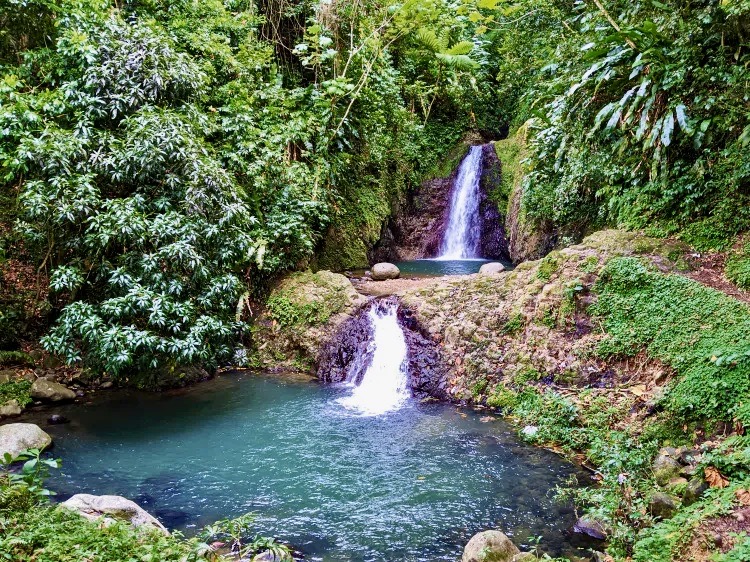
Seven Sister Waterfalls
These seven breathtaking waterfalls may be found close to the Grand Etang Nature Reserve in St. Andrew. The reserve is known for its abundant flora and fauna. To get to the waterfalls requires a pleasant walk through the jungle that takes about half an hour, and once you get there, you may cool yourself in the pool that sits at the base of the falls.
Grand Anse Beach
This internationally renowned beach stretches for about three kilometers along the southwestern shore, and it features two miles of soft, white sand that is protected from the elements. Conveniently located water sport professionals, hotels, restaurants, and a Vendors Market providing a wide range of local services and goods.
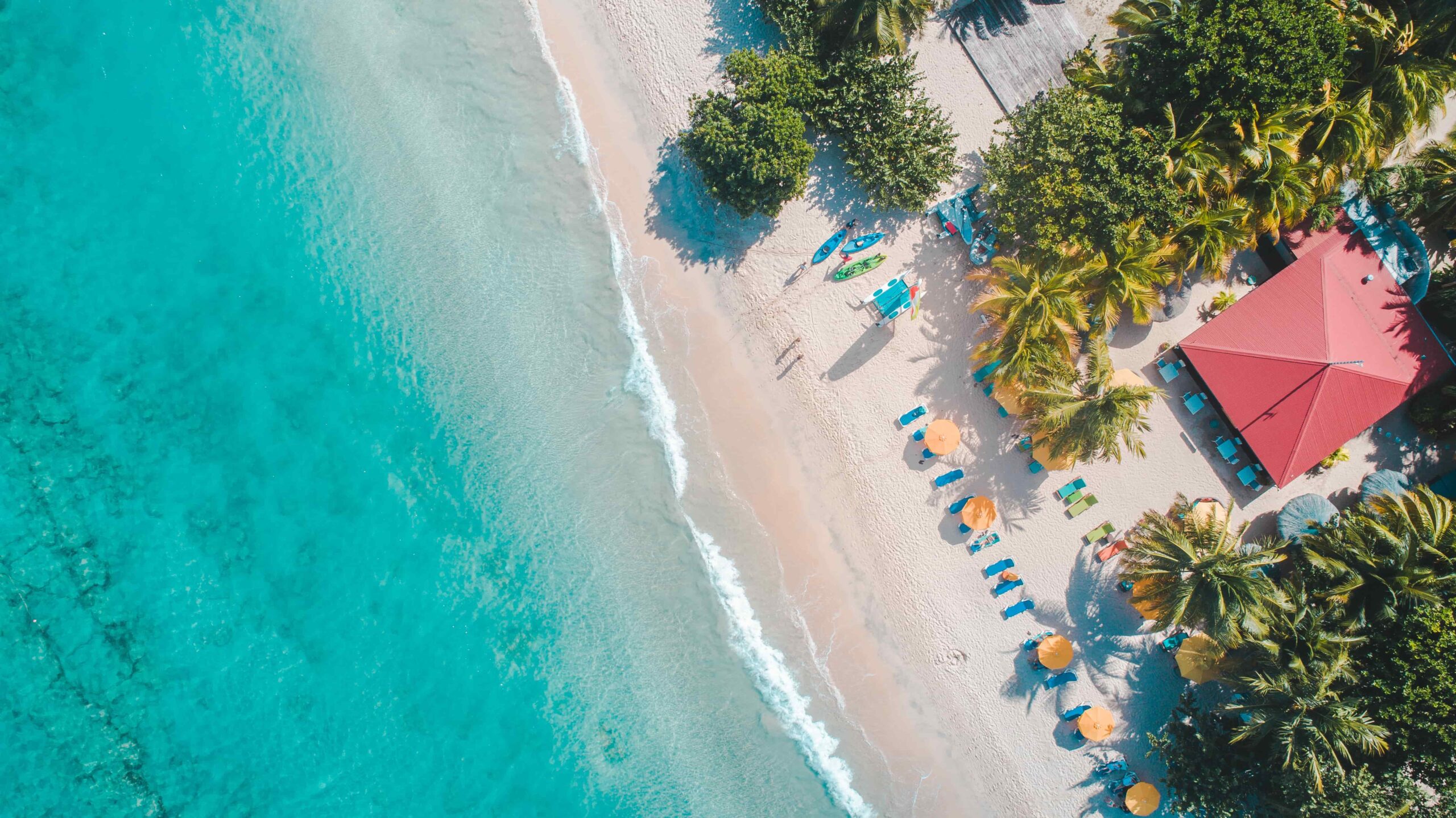
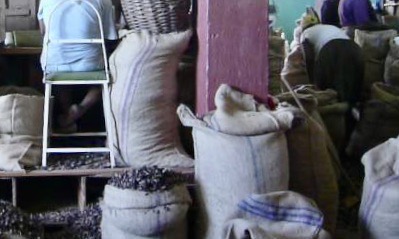
Gouyave Nutmeg Factory
This manufacturing facility can provide you with an informative tour if you visit it on the west coast. During the tour, which lasts around twenty minutes, you will be shown the whole process, including stockpiling, cracking, sorting, the water testing, and grading by size.
7-day Itinerary in Grenada
Day 1
Arrive in St George’s
Welcome to Grenada! As soon as you step foot on Grenada’s soil, you’ll get a whiff of nutmeg, proving the island’s legendary spice island title is well-deserved. Grand Anse is where a large number of the island’s most opulent resorts are concentrated, so be sure to check it out on your short ride from the airport to your hotel or other accommodation before making the quick trip to St. George’s. Slow down on day one if you want to experience the island like the locals do. Drop your luggage off at your accomodation and then head to peaceful Mourne Rouge Bay to relax after the long trip to reach Grenada. Alternatively, if you wish to relax on a sun lounger on Grand Anse Beach and enjoy a meal, many resorts feature excellent restaurants with a wide selection of foods.
Sit back and listen to the birds sing as you watch the sun slowly fall below the horizon against a backdrop of orange clouds. These vistas should convince you that you have indeed arrived at the heaven on Earth if your first impressions did not.
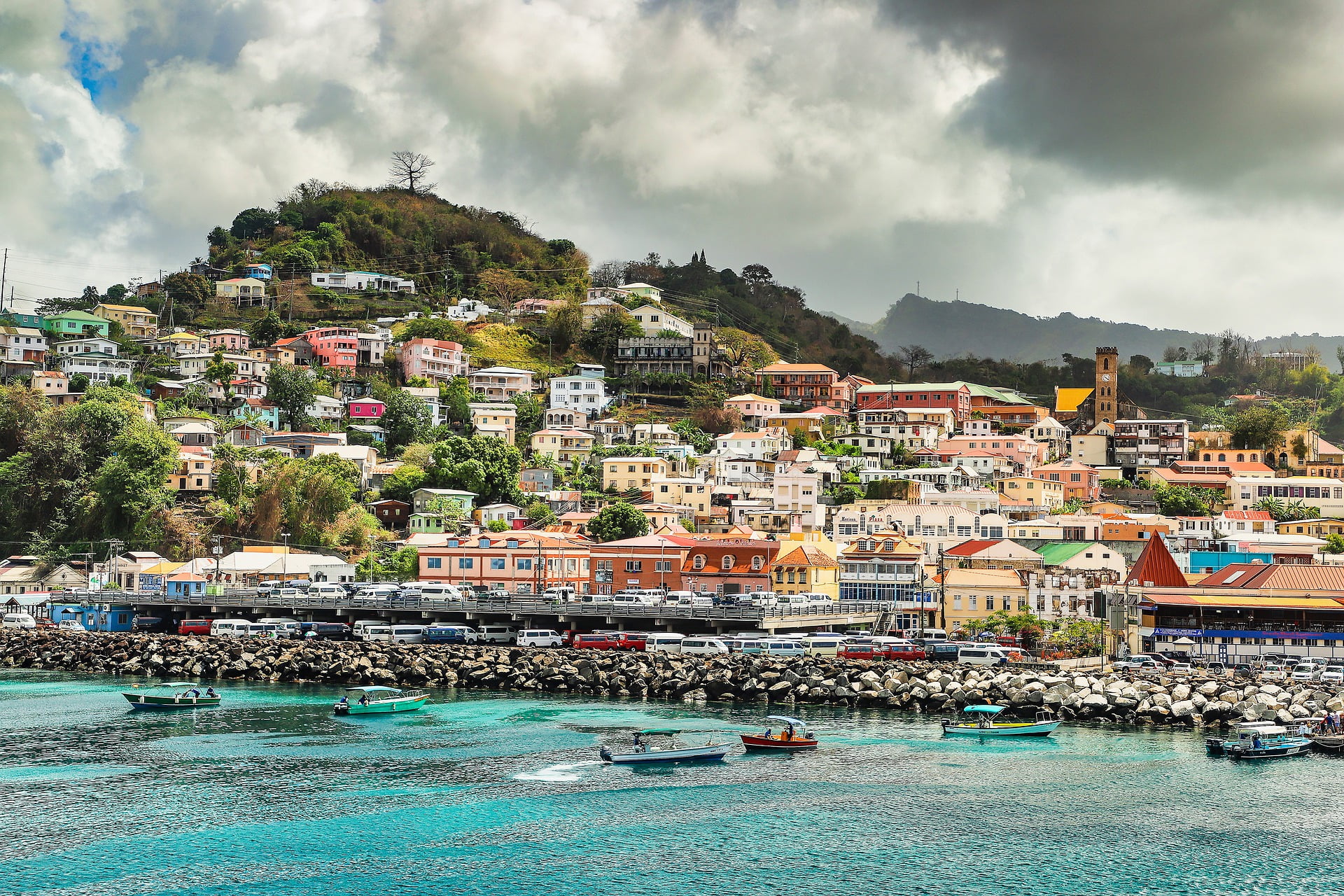

- Backpacker:
- Budget:
- Mid-range:
- Luxury:
When it becomes dark, a foreign city may be twice as dangerous - especially if you don't understand the language and are unfamiliar with the area. There is little reason to be alarmed about walking alone in the city since there low crime rate in St George's and some of the only crimes are pickpockets. You can walk safely at day, but be wary while walking at night and be alert in crowded areas or unlit alleys or streets. You can always take taxis, if you don't feel comfortable, Be wary of petty crime by taking precautions mentioned in the safety section above.
From the Airport to St George's Center
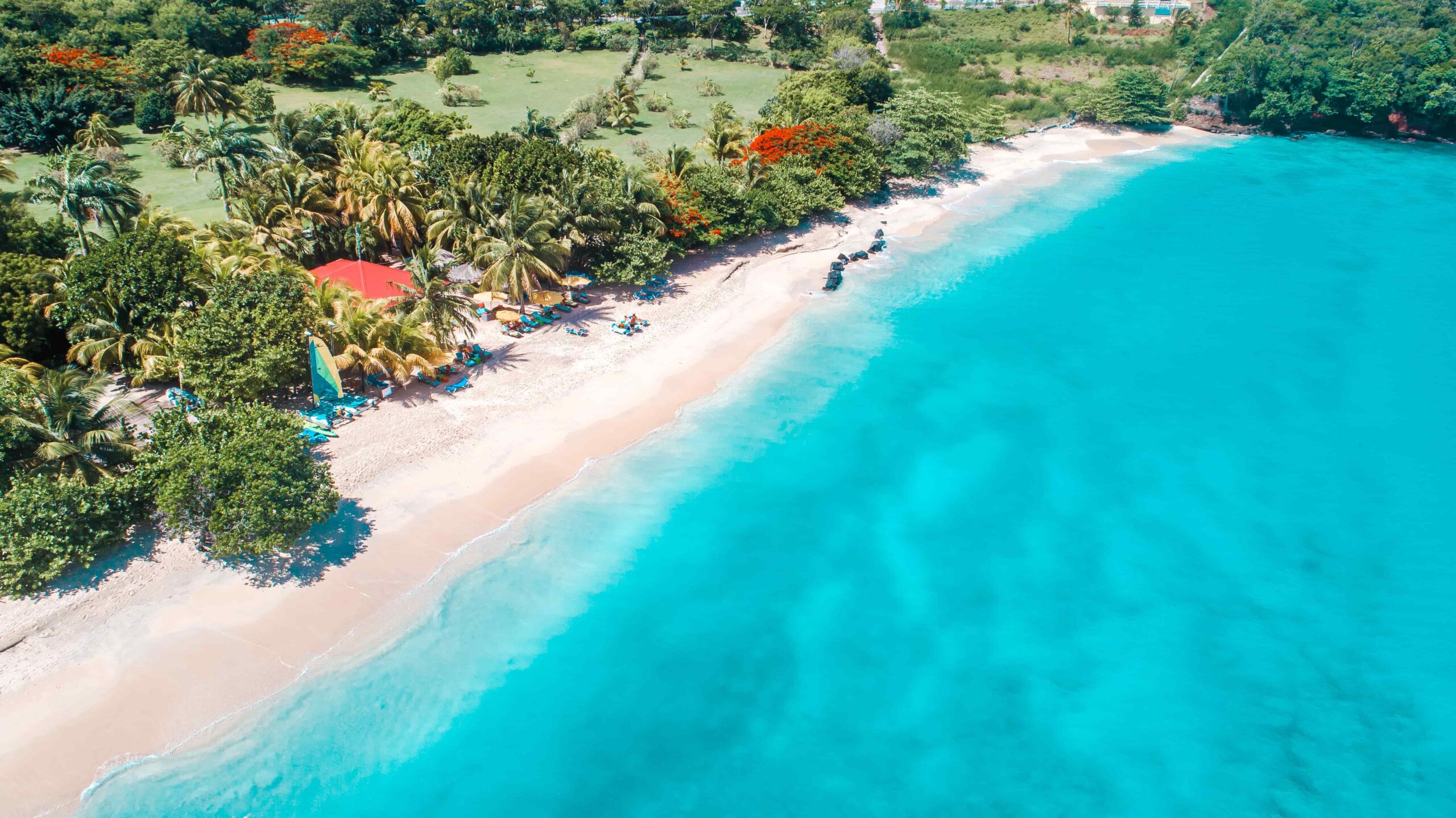

Day 2
Chilling at Grand Anse
After a good sleep, wake up early to watch the sun rise, have a hearty breakfast and head to Grand Anse Beach, whether you’re already there, if it’s nearby, or if it isn’t, this is your first stop today. This one mile of pure white sand stretching out on the coast of Grand Anse, you will be greeted by pristine waters dazzling with unreal shades of blue. You will find stands selling chilled drinks and simple munchies to take while are being sun-kissed.
As night falls, the traditional Caribbean sounds of dancehall, reggae, and calypso emerge from lively venues and bars, and the crowd becomes amped up like Ester’s Bar, a local hotspot. When the night falls, change up the location and head to Umbrella’s Beach Bar, or any other one you like. Umbrella’s Beach Bar is busy all day, but really lights up the ramps at night. There are several benches for people to sit together on the roof and on the balcony out front, where they may enjoy the sunset.
Day 3
Exploring St George’s
St. George’s, Grenada’s capital, is a veritable kaleidoscope of color because of the fishermen’s cottages that cling to the mountainside and are painted in every imaginable shade. The narrow streets of this bustling tiny city are home to many hidden treasures, including but not limited to art galleries presenting local works.
Carenage Harbor is the heart of St. George’s, so after a hearty breakfast, head that way. Tourists usually find fishing boats bobbing at the pier, full of the day’s catch. St. George’s is surrounded by imposing forts on all sides, a somber reminder of the city’s glorious past. Fort George is the nearest, and it features massive iron cannons along its ocean-facing walls. You may get a great view of the capital from Fort Frederick, which is just outside the city. The fort itself transports visitors to an era when Britain and France fought each other.
Now it’s time for a tried and true establishment. House of Chocolate caters to those with a sweet tooth by offering treats made from cocoa beans grown on the site. You may take some bars with you on the move, or you can sit in the cute café and enjoy some freshly baked cakes and hot chocolate with melty marshmallows. If chocolate isn’t your thing, feel free to visit any of the other attractions in St. George’s.
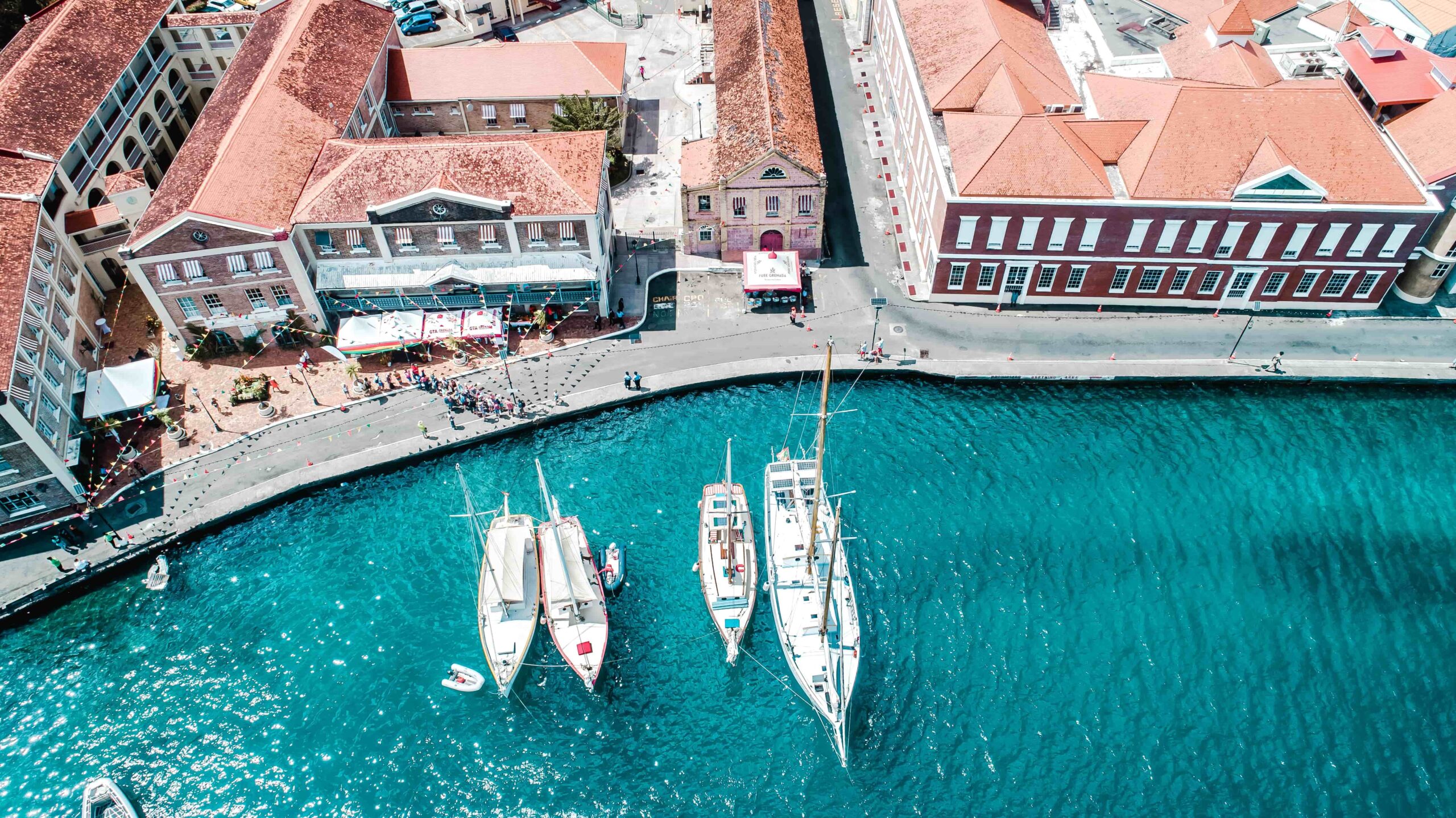
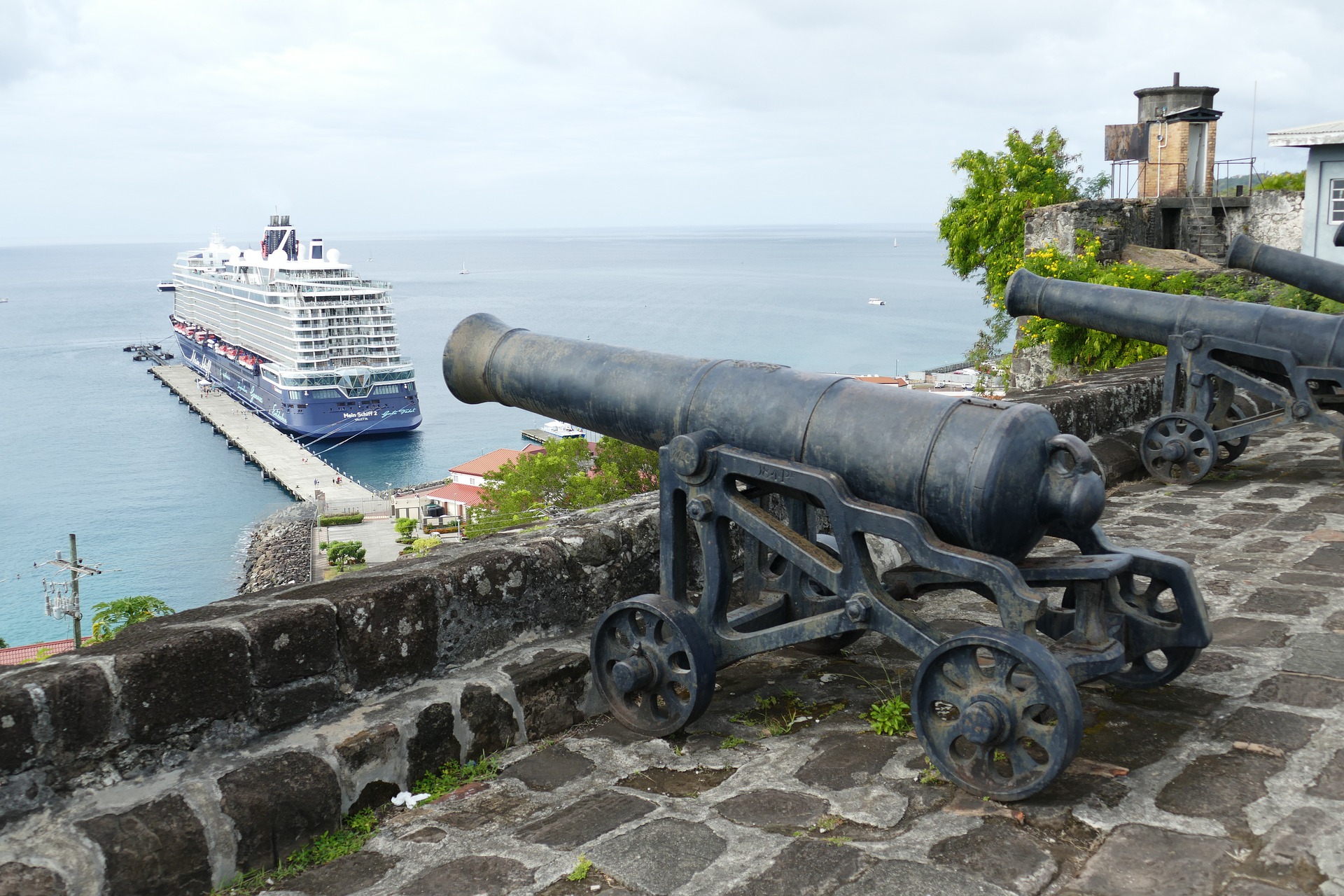
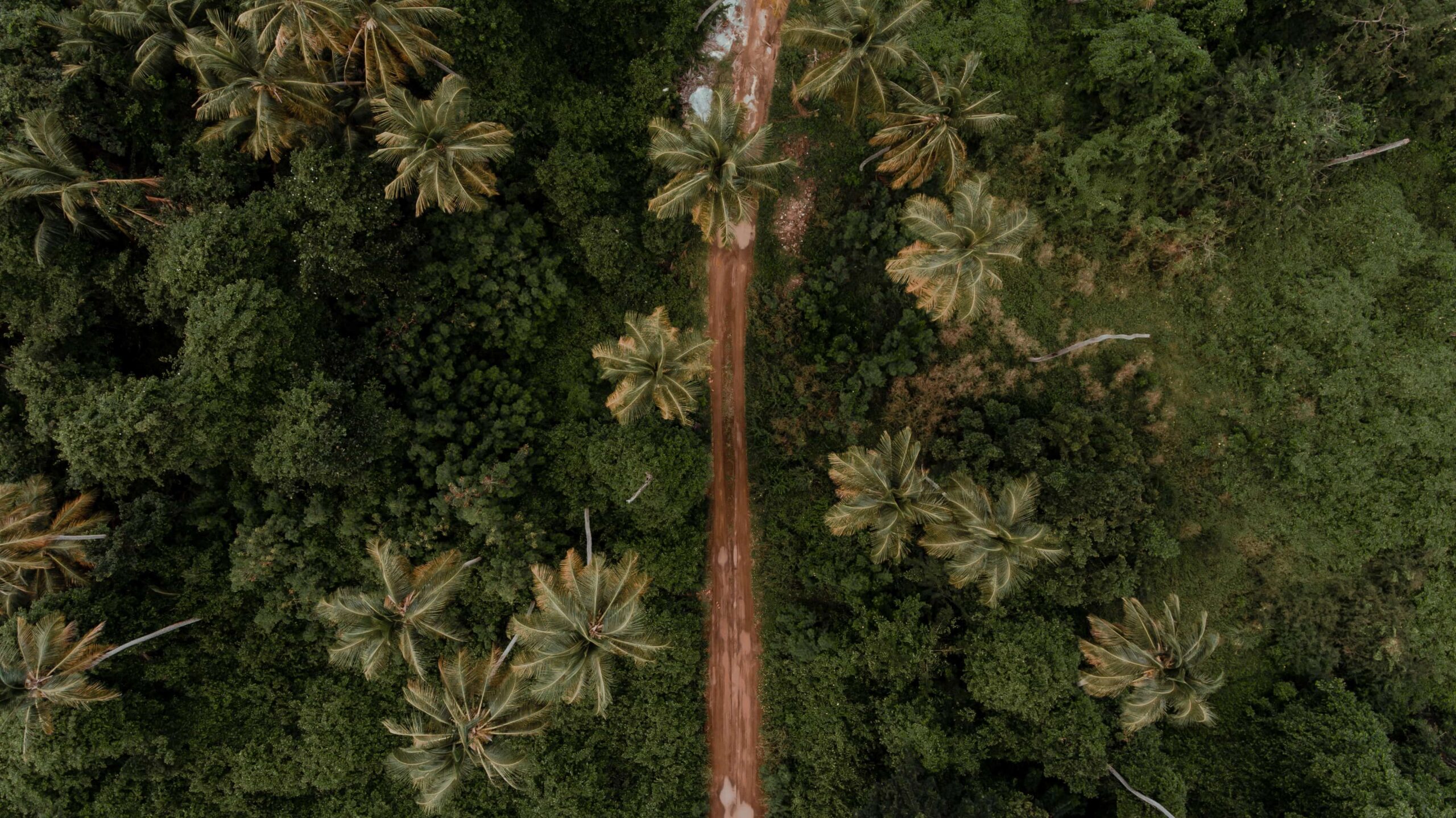

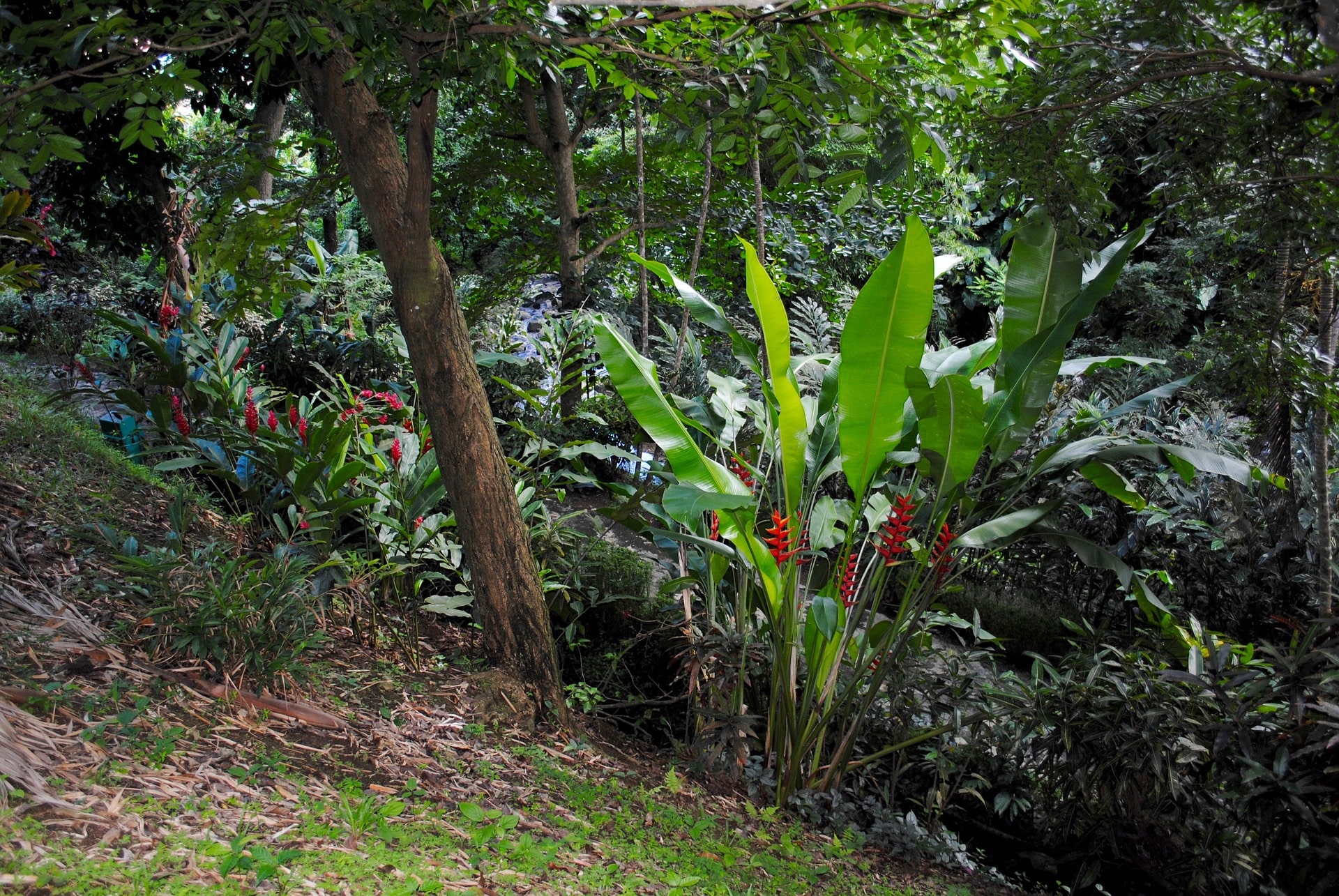
Day 4
A Hiking Day
Experiencing the island’s interior on day four of your journey to Grenada is a must if you want your vacation to feel authentic. Enchanting emerald green hills give spectacular perspectives in the island’s lush center, while clouds cling to the summit as you climb higher. With so many tasty fruits lying around, tropical woods are a haven for many sorts of creatures, some of which you might be able to observe while you stroll through them. You’ll begin to comprehend the nearly supernatural connection that native Grenadian people have to their country as you ascend to its pinnacle. Visit the little village of Gouyave and take in the increasingly noticeable nutty scent. Learn about the island’s signature export—nutmeg—as you stroll down the aromatic path that leads to the Nutmeg Processing Plant. The next stop is the huge spice plantation of Belmont Estate, which has a history that spans generations. Take in the fresh mountain air as you stroll through the groomed gardens, which are home to blooming cinnamon, ginger, turmeric, and nutmeg, among other spices.
Visitors who venture away from the beaches are drawn by the stunning waterfalls that dot this wild landscape. Concord Falls, with its stunning double-drop waterfalls and convenient location just off the main road, is among the most visited. If you want to get away from the throng, there’s a small route that leads to the Upper Falls. Seven Sisters Falls, also known as St. Margaret’s Falls, is a set of waterfalls that seems like it was plucked right out of a fantasy novel or film and is sure to entice any hiker with a penchant for danger.
Day 5
Lay Back
After yesterday’s strenuous hike over the mountains, today is the day to relax. Unwind in the lowlands after breakfast and take in the sights and sounds of the water while you sip a cold beverage and take in the sea breeze. If you haven’t been there previously, Morne Rouge Beach is an incredible oasis in the middle of nothing. This tranquil hangout is popular with a relaxed clientele that’s ideal for daytime activities. Once you’ve slept enough, if you still feel like going to the beach, Magazine Beach is conveniently located adjacent to the airport. It’s well worth your time to see this fantastic beach, which features stunning pearly white sand and azure shimmering sea.
Relax with some cold ones at the end of a long day, eat, and spend the night wherever you choose; then, return to your accommodation to pack for the next day’s adventure.

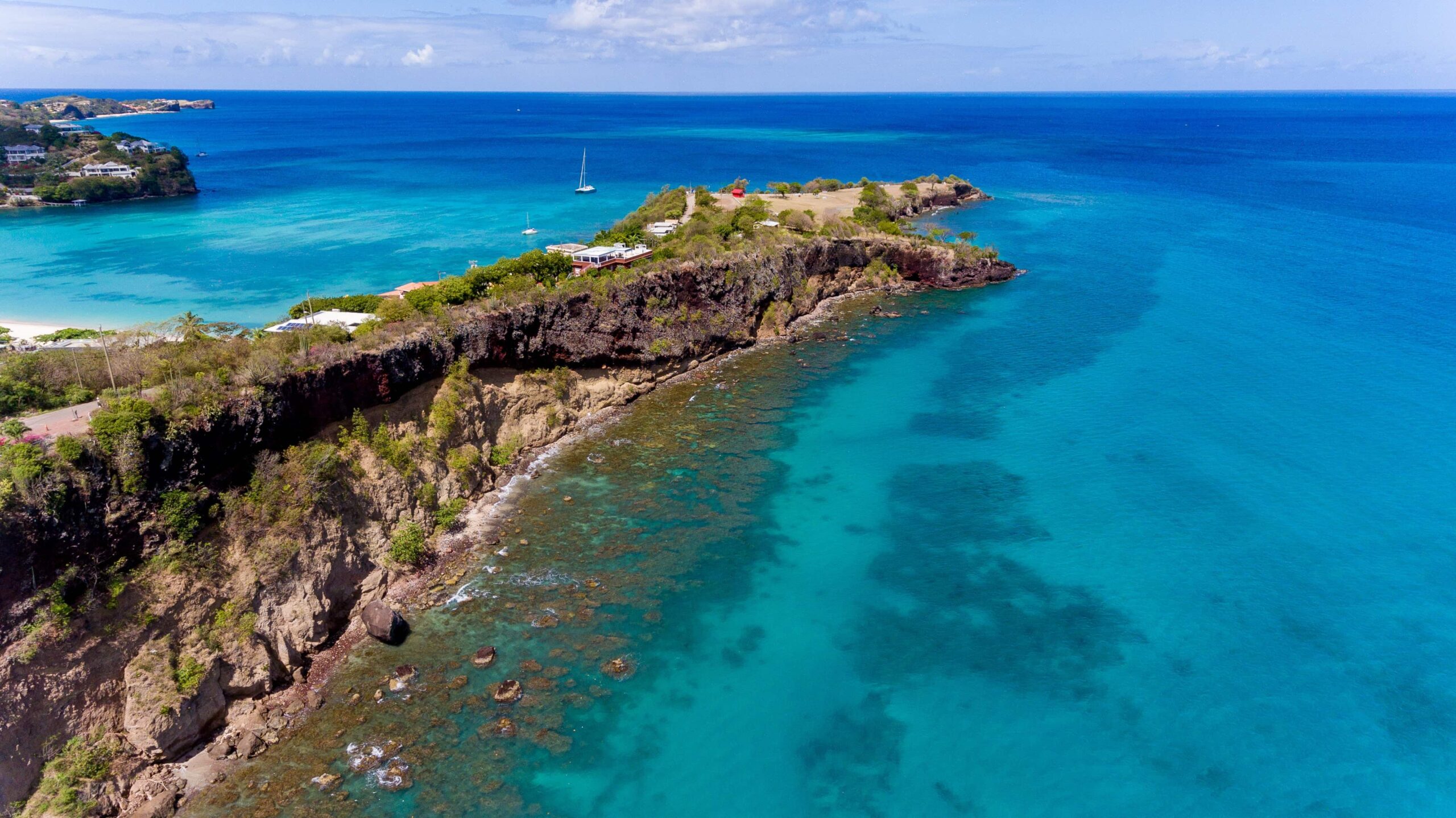


Day 6
Head to Carriacou
Get on a ferry in the morning after breakfast and sail the two hours to Carriacou, the doorway to paradise. Only a select handful get to experience the pleasure of this tropical gem because of its lack of glitz and affordable lodgings. Sounds of people walking on the beach and the splashing of blue water are all that can be heard. The name “Paradise Beach” was chosen because it exemplifies the location, atmosphere, and activities offered at this exceptional beach.
You’ve come today to enjoy the peace and quiet that comes from watching waves smash onto the shore and fade away into the soft white sand. There are a pair of dive bars serving beverages, with Hardwood Bar being the best option for catching a water taxi. The other is the colorful and occasionally rowdy neighborhood of Off D Hook. A visit to little Sandy Island is like being abandoned on a deserted island in the midst of the ocean, high above the sparkling waves. You can reach this tiny speck of white sand in about fifteen minutes by boat from the mainland. The aforementioned watering establishments in Hillsborough’s downtown core are within easy walking distance of water taxis, and the drivers there will be happy to pick you up. You can then either take a ferry back to the main island, or stay the night in one of the modest lodges.
Day 7
Last Hours…
Go to Kayak Kafe on Carriacou for a revitalizing smoothie and breakfast or lunch, depending on your wake-up time and personal taste. After that, visit Anse La Roche; however, don’t forget to take some snacks with you, since you’ll be hungry again before lunchtime. This mainly unexplored virgin bay, normally desolate and fully unspoilt, may be found by tramping through the forest in the extreme north of Carriacou. Take in the ocean views and revel in the thrill of having discovered your own own tropical paradise. An additional slice of paradise. Visit Slipway, a charming restaurant with delicious fish and burgers, helpful staff, and excellent service, on your last night of vacation. Depending on the time of your trip, you may not have time to stop at any of these places on the way to Grenada. Cheers to the moments you’ve created in Grenada.


The Most Popular Food in Grenada
The cuisine of Grenada reflects the many cultures that have left their mark on the island, including those of France, Britain, Africa, Portugal, and India. Grenadians may thank India for introducing them the roti, a flour-and-water flatbread that resembles a tortilla. The island is home to a wide variety of delicious spices that are used in many local recipes. In addition, you may get seasonal produce. When you get a chance, sample a wide variety of tropical fruits. Spicy sweets and curries are also frequent.

Oil Down
This meal is considered to be Grenada’s national food. Breadfruit, coconut milk, turmeric, dumplings, salted pork, and callaloo are the ingredients that go into its preparation (typically saltfish, smoked herring, or salt beef). The ingredients are combined before being cooked in a huge pot known as a karhee, which is also referred to as a curry pot.

Pelau
You may experiment with this meal because there are so many ways to prepare it. Grenadians prepare pelau meals using rice as the foundation, and then add meat or fish, beans, sweet peppers, carrots, celery, coconut milk, and brown sugar. The chicken variety has a somewhat sweet flavor due to the sugar coating on the flesh. The dish’s special flavor comes from being simmered in coconut milk, which also ensures that you’ll want to eat it more than once.

Curried Goat
If you’re ever on the islands, you must try the goat curry. Goat meat in Grenada is typically seasoned with a mix of sugar, fresh local herbs and spices. Spices and seasonings including curry powder, curry, onion, and garlic are added. Depending on the restaurant, this meal may or may not be spicy, however many may serve lime pickles as a way to tone down the heat. If you want something milder, you should probably ask the restaurant about it before you order. The traditional accompaniments for “curry goat,” as the locals call it, are rice and peas, fried plantain, or baked yams.

Grenadian Spice Cake
This sweet treat is a local favorite in Grenada. In addition to being sprinkled with confectioners’ sugar and served with fruits of the season, it is flavored with the spices that are native to the island.

Roti
When done correctly, roti can be simply mouthwatering from its richness. A roti is simply a shell comprised of flour, baking powder, salt, water, oil, and shortening that is loaded with curry-flavored meat, fish, or vegetables that have been cooked with potatoes. The roti shell also contains potatoes (for cooking). Although it has the appearance of a wrap, the roti shell has its own distinct flavor that works wonderfully with the curry that is on the inside. Due to the fact that a roti may be rather full, the ideal time to have one is typically around the lunch hour.
What's the Travel Budget for Grenada
Flights
- Flights start at roughly $230 from nearby countries. Tickets however on average cost around $1,200 and can cost way more depending on which class and from which country you depart from.
Accommodation
- Nomad Backpacking style travelers can expect to spend around $350 for a week
- Budget travelers can expect to spend around $500 for a week
- Mid-range travelers can expect to spend around $1,200 for a week
- Luxury travelers can expect to spend around $4,500 for a week
Food Budget (Three meals and drinks)
- Nomad Backpacking style travelers can expect to spend around $25 per person per day
- Budget travelers can expect to pay around $35 per person per day
- Mid-range travelers on average would cost $45 to $60 per person per day
- Luxury travelers can expect to pay around $80 to $130 per person per day
Overall Budget Styles (Not including Flights, Tours, Transportation, or Car Rental)
- Nomad Backpacking style travelers can expect to spend roughly $500 for a week
- Budget travelers can expect to spend close to $850 for one person for a week
- Mid-range travelers can expect to spend approximately $1,750 for one person for a week
- Luxury travelers can expect to spend around $5,580 for one person for a wee
Flights
- Flights start at roughly $230 from nearby countries. Tickets however on average cost around $1,200 and can cost way more depending on which class and from which country you depart from.
Accommodation
- Nomad Backpacking style travelers can expect to spend around $350 for a week
- Budget travelers can expect to spend around $500 for a week
- Mid-range travelers can expect to spend around $1,200 for a week
- Luxury travelers can expect to spend around $4,500 for a week
Food Budget (Three meals and drinks)
- Nomad Backpacking style travelers can expect to spend around $25 per person per day
- Budget travelers can expect to pay around $35 per person per day
- Mid-range travelers on average would cost $45 to $60 per person per day
- Luxury travelers can expect to pay around $80 to $130 per person per day
Overall Budget Styles (Not including Flights, Tours, Transportation, or Car Rental)
- Nomad Backpacking style travelers can expect to spend roughly $500 for a week
- Budget travelers can expect to spend close to $850 for one person for a week
- Mid-range travelers can expect to spend approximately $1,750 for one person for a week
- Luxury travelers can expect to spend around $5,580 for one person for a wee
Flights
- Flights start at roughly $230 from nearby countries. Tickets however on average cost around $1,200 and can cost way more depending on which class and from which country you depart from.
Accommodation
- Nomad Backpacking style travelers can expect to spend around $350 for a week
- Budget travelers can expect to spend around $500 for a week
- Mid-range travelers can expect to spend around $1,200 for a week
- Luxury travelers can expect to spend around $4,500 for a week
Food Budget (Three meals and drinks)
- Nomad Backpacking style travelers can expect to spend around $25 per person per day
- Budget travelers can expect to pay around $35 per person per day
- Mid-range travelers on average would cost $45 to $60 per person per day
- Luxury travelers can expect to pay around $80 to $130 per person per day
Overall Budget Styles (Not including Flights, Tours, Transportation, or Car Rental)
- Nomad Backpacking style travelers can expect to spend roughly $500 for a week
- Budget travelers can expect to spend close to $850 for one person for a week
- Mid-range travelers can expect to spend approximately $1,750 for one person for a week
- Luxury travelers can expect to spend around $5,580 for one person for a wee
Flights
- Flights start at roughly $230 from nearby countries. Tickets however on average cost around $1,200 and can cost way more depending on which class and from which country you depart from.
Accommodation
- Nomad Backpacking style travelers can expect to spend around $350 for a week
- Budget travelers can expect to spend around $500 for a week
- Mid-range travelers can expect to spend around $1,200 for a week
- Luxury travelers can expect to spend around $4,500 for a week
Food Budget (Three meals and drinks)
- Nomad Backpacking style travelers can expect to spend around $25 per person per day
- Budget travelers can expect to pay around $35 per person per day
- Mid-range travelers on average would cost $45 to $60 per person per day
- Luxury travelers can expect to pay around $80 to $130 per person per day
Overall Budget Styles (Not including Flights, Tours, Transportation, or Car Rental)
- Nomad Backpacking style travelers can expect to spend roughly $500 for a week
- Budget travelers can expect to spend close to $850 for one person for a week
- Mid-range travelers can expect to spend approximately $1,750 for one person for a week
- Luxury travelers can expect to spend around $5,580 for one person for a wee
If you want to know what to pack, read this list below:
- This is a casual Island country with warm weather that tends to get hot in the summer and mild in the winter, dress accordingly
- Raincoat or Light Waterproof Jacket
- Hiking Boots or Sturdy Sneakers (Shoes You Don’t Mind Getting Wet)
- Sunscreen
- Insect Protection – Repellent and Clothing
- Sunglasses and Sun Hat
- Water Shoes
- Beach Towels/Sarong
- Dry Bag
- Money Belt or Cross Bag
- Portable Medical Kit
- Flashlight or Headlamp
- Copies of your passport.
- Get all the needed vaccinations before traveling
- A power bank is a must in any travel.
- Always have some cash with you just in case there are no ATMs and if you are dealing with a business that solely accepts cash
- Get yourself an adapter for your gadgets
- 1 toothbrush
- 1 tube of toothpaste
- 1 razor
- 1 package of dental floss
- 1 small bottle of shampoo
- 1 small bottle of shower gel
- 1 towel
- Deodorant
- Band-Aids
- Hydrocortisone cream
- Antibacterial cream
- Earplugs
- Tylenol
- Hand sanitizer (germs = sick = bad holiday)
- A key or combination lock
- Zip-lock bags
- Plastic bags (great for laundry)
- Universal charger/adaptor
- LifeStraw (A water bottle with a purifier)
- 1 dry shampoo spray & talc powder
- 1 hairbrush
- Makeup you use
- Hairbands & hair clips
- Feminine hygiene products
Clothing For Boys
- 1 pair of jeans or khaki pants
- 1 pair of shorts
- 1 bathing suit
- 5 T-shirts
- 1 long-sleeved T-shirt
- 1 pair of flip-flops
- 1 pair of sneakers
- 6 pairs of socks
- 5 pairs of boxer shorts
Clothing For Girls
- 1 swimsuit
- 1 sarong
- 1 pair of stretchy jeans
- 1 pair of leggings
- 2-3 long-sleeve tops
- 2-3 T-shirts
- 3-4 spaghetti tops
- 1 light cardigan
Want to plan your own trip, here are some of the best resources that can help you
- Skyscanner – They search small websites and budget airlines that larger search sites tend to miss. They are hands down the number one place to start.
- Momondo – This is another favorite flight search engine because they search such a wide variety of sites and airlines. Always check here too.
- Booking.com – The best all-around booking site that constantly provides the most affordable and lowest rates. They have the widest selection of budget accommodation.
- Couchsurfing – This website allows you to stay on people’s couches or spare rooms for free. It’s a great way to save money while meeting locals who can tell you the ins and outs of their city. The site also lists events you can attend to meet people (even if you’re not staying with someone).
- Intrepid Travel – If you want to do group tours, go with Intrepid. They offer good small group tours that use local operators and leave a small environmental footprint.
- Grassroots Volunteering – For volunteering, Grassroots Volunteering compiles a list of good local volunteer organizations that keep the money within the community.
- Get Your Guide – Get Your Guide is a huge online marketplace for tours and excursions. They have tons of tour options available in cities all around the world, including everything from cooking classes, walking tours, street art lessons, and more! It has the world’s largest collection of things to do with more than 30,000 activities in 7500 destinations.
- SafetyWing – Safety Wing offers convenient and affordable plans tailored to digital nomads and long-term travelers. They have cheap monthly plans, great customer service, and an easy-to-use claims process that makes it perfect for those on the road.
- Trip Advisor: Check the reviews and then book your accommodation. TripAdvisor is where you go when you want to compare prices with multiple accommodation providers.
- VRBO: is the main search engine to use when you are looking for a home or apartment rental. It can sometimes be cheaper than hotels and it is the best way to stay in areas that offer a more local feel.
- Hostelworld: With one of the largest databases of hostels in the world, Hostelworld is the go-to site when you are looking for budget accommodation.
- Rome 2 Rio: If you want to see how to get somewhere by plane, train, bus, ferry, or car Rome2Rio lays it all out for you as well as related costs.
- World Nomads Insurance: When traveling you should always have travel insurance. We have found the best bang for your buck is by far World Nomads.
Final Thoughts on Grenada
Grenada is appealing for many reasons including its rich history and culture, which can be seen in its traditional buildings and rural landscapes, its unusual and beautiful landmarks, many of which are listed on the UNESCO World Heritage Sites list, its unbelievable warmth despite the freezing weather, its exciting events and festivities, and its vivid picture-perfect surroundings of highlands and pristine waters, ideal for sunbathing and watching beautiful sunsets. Evidence suggests that Grenada’s history extends back much further than 2,000 BC when it was first documented. A piece of a fallen Caribbean civilization and a meeting point for a number of different cultures; one of the top travel destinations. With its stunning scenery, wide variety of wildlife, and intriguing historical sites, Grenada is quickly becoming a popular tourist destination, especially for its tropical activities that include kicking back at the pristine beaches or witnessing the beautiful sunsets of the Caribbean. Are you planning on going on a trip to Grenada?
Have you ever been to Grenada? Post your thoughts, questions, and concerns down below.